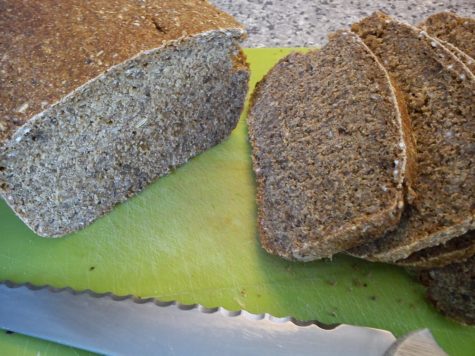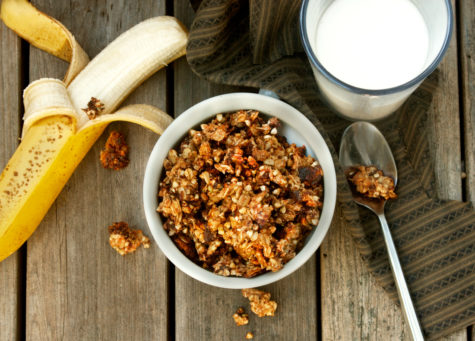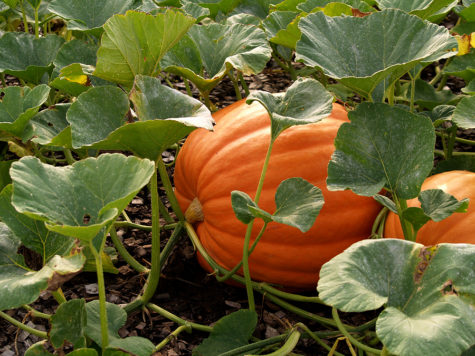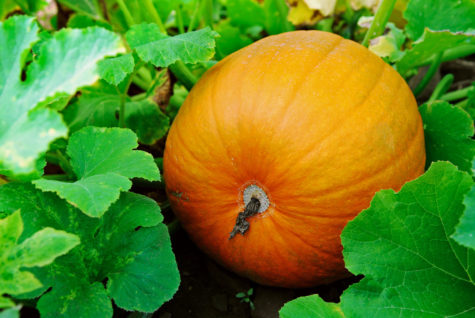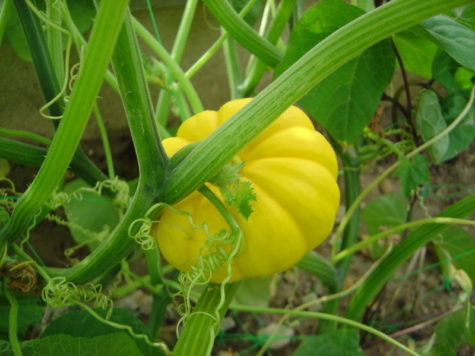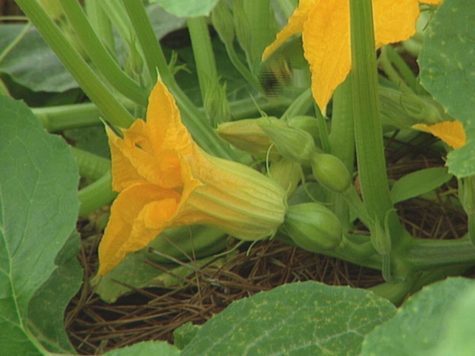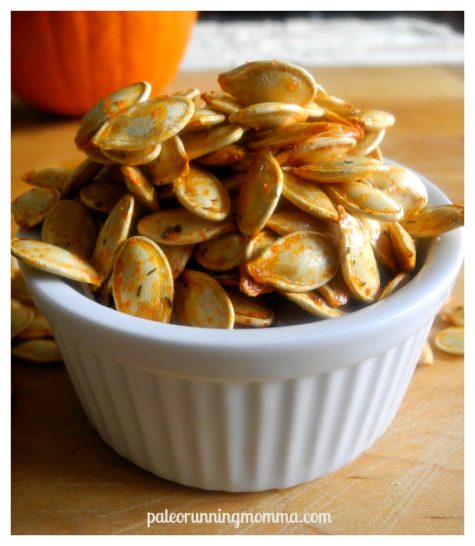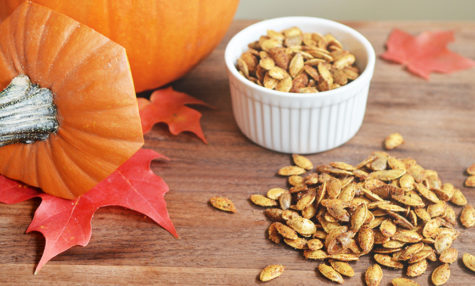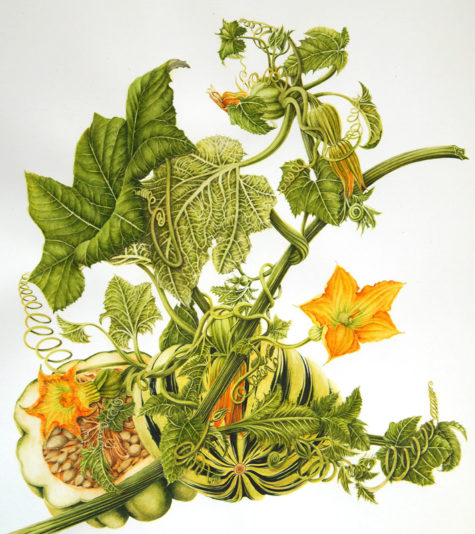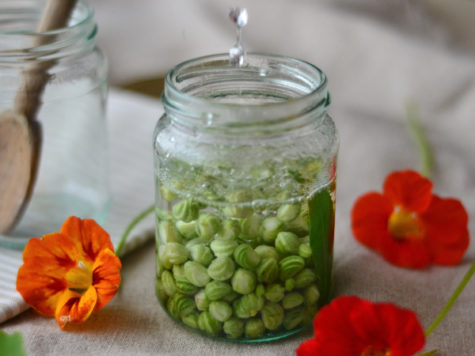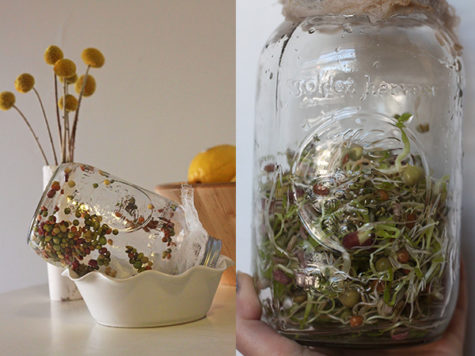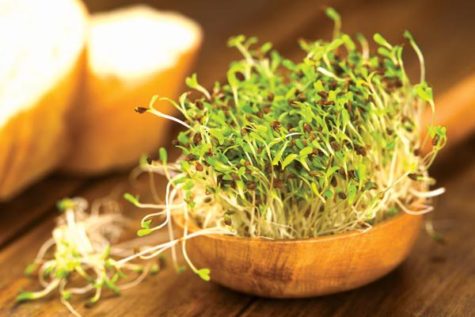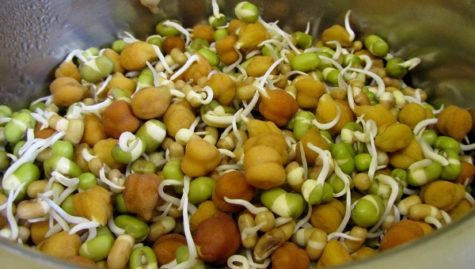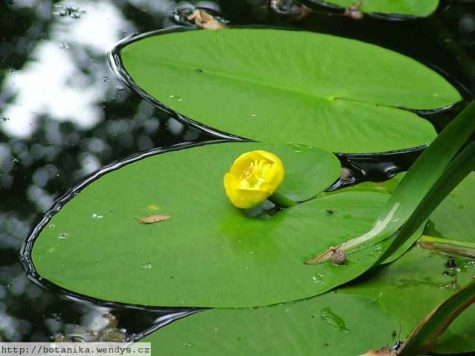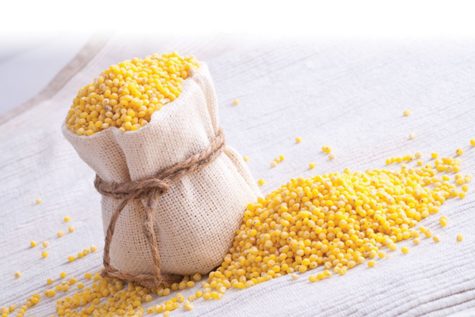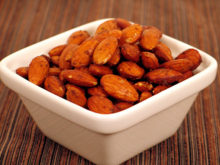Seeds
Lovage Seed Brandy Bread
- 1 pkg dry yeast
- 1 tsp sugar
- 1/1/4 cups warm (not hot) water
- 2 teasp salt
- 2 1/2 cups wheat flour
- 2 1/2 cups white flour
- 1 tablespoon brandy
- 1 tablespoon vegetable oil
- 1 onion peeled and grated
- 1 tablespoon lovage seeds
Mix the yeast, sugar, and warm water together. Set aside in a warm spot until the mixture grows frothy. Sift together the flours and salt in a separate bowl. Add the oil, yeast mixture, onion, and brandy, kneading to make a soft dough.
Turn the dough onto a floured board and gently knead for 10 minutes. The dough should be smooth and elastic. Return the dough to the bowl, cover with a damp cloth, and leave to rise for 1 1/2 hours or until doubled in size.
Punch down dough, turn onto the floured surface, and knead for five minutes. Form dough into a loaf shape and place in a well-greased 9 by 5 by 2 1/2 inch loaf pan, turning once to coat all sides.
Sprinkle with lovage seeds and let rise for 15 minutes while you preheat oven to 450 degrees.
Bake approximately 30 to 40 minutes or until done.
About Lovage:
Lovage is an ancient healing herb, mostly used for its diuretic properties in cases of water retention and urinary difficulties, and also for pain and swelling (inflammation) of the lower urinary tract, for preventing of kidney stones, and to increase the flow of urine during urinary tract infections.
The seeds, leaves and leaf stems have a strong, earthy, celery flavor that enriches soups and stews and is particularly useful in vegetarian dishes, with rice, vegetable stuffings and nut roasts. More info on this herb can be found at the Encyclopedia of Herbology.
Buckwheat Granola with Vanilla
- 3 cups roasted buckwheat groats
- 1 cup quinoa
- ½ cup uncooked millet
- ½ teaspoon sugar
- 1 cup chopped walnuts
- 1 cup sesame seeds
- 1 cup sunflower seeds
- ⅓ cup unsweetened applesauce
- 4 tablespoons olive oil
- 2 tablespoons honey
- 1 teaspoon vanilla extract
- 1 teaspoon maple syrup
Preheat oven to 360. Combine groats, millet, walnuts, and seeds in a large bowl.
In a small pot, on low heat, warm sugar, vanilla extract, maple syrup, honey, applesauce and olive oil. Pour wet mixture over ingredients in large bowl until well covered. Spread onto baking sheet lined with parchment paper. Bake for 25 minutes or until quinoa seeds appear golden. Cool before serving or storing.
From: Jen Reviews
Pumpkin
If you want to look and feel beautiful, consider including pumpkin as part of your diet.
Pumpkin has a range of fantastic health benefits, including being one of the best-known sources of beta-carotene. Beta-carotene is a powerful antioxidant. It also gives orange vegetables and fruits their vibrant color. The body converts any ingested beta-carotene into vitamin A.
Beta-carotene is a powerful antioxidant. It also gives orange vegetables and fruits their vibrant color. The body converts any ingested beta-carotene into vitamin A. Consuming foods rich in beta-carotene may reduce the risk of developing certain types of cancer, offer protection against asthma and heart disease, and delay aging and body degeneration. Pumpkins are also a powerful source of fiber.
The potassium contained within pumpkins can have a positive effect on blood pressure. The antioxidants in pumpkin could help prevent degenerative damage to the eyes.
Many studies have suggested that eating more plant foods such as pumpkin decreases the risk of obesity and overall mortality. It can also help prevent diabetes and heart disease, and promote a healthy complexion and hair, increased energy, and a healthful body mass index (BMI).
Pumpkin has been implicated in helping with the following:
- Aids in weight loss (due to fiber content)
- May reduce cancer risk (due to the antioxidant beta-carotene)
- Protects the skin (due to carotenoids)
- Sharpens eyesight (due to high levels of vitamin A)
- Maintains prostate health (due to zinc content of seeds)
- Helps boost mood and prevent depression (due to tryptophan content in seeds)
- Improves heart and muscle function (due to potassium and magnesium content)
- Improves immune system (due to zinc and vitamin C content)
- Helps expel intestinal worms (due to cucurbitins)
More on this “super” food can be found here: Encyclopedia of Herbology: Pumpkin
Pumpkin – It’s What’s For Dinner:
The edible parts of a pumpkin are the leaves, fruit and the seeds. High nutrients and medicinal properties in pumpkin leaves, fruit and seeds make it an attractive health food proposition.
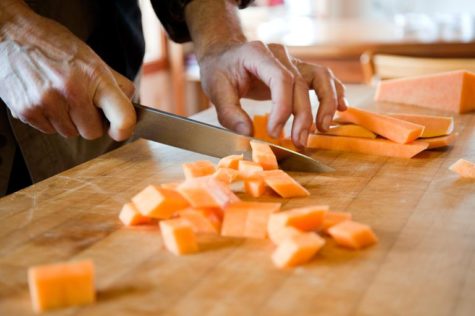
The pumpkin’s flesh can be either sweet or bitter, and it is commonly used in pies, scones, soups, stews, and other recipes.
- Pumpkins are high in protein and fiber, but low in fat. They are an excellent source of iron and vitamin A.
- Cooked pumpkin provides about 20 calories and 4.90 g of carbohydrates per 100 g serving.
The young fruit of a pumpkin is best used in savory entrees and sides, while the mature fruit goes best in pies and other sweet desserts. Medium-sized varieties, like ‘Autumn Gold’, ‘Jack-o-Lantern’, and ‘Spirit’ are among the best for culinary use; however, larger varieties like ‘Big Tom’ and ‘Jackpot’ are also popular.
When ripe, the pumpkin can be boiled, steamed, or roasted. Pumpkins that are still small and green may be eaten in the same way as pumpkin or zucchini.
In addition the fruit can be baked by cutting it into two halves, scooping out seeds and placing the hollow side down in a big tray followed by baking in an oven.
Preparing fresh pumpkin at home will deliver the most benefits for your health, but canned pumpkin is also a great choice. Pumpkin retains many of its health benefits in the canning process.
Pumpkin pie is a sweeter way to incorporate the benefits of pumpkin into the diet. Be sure to make a pumpkin puree rather than buying pre-made. Steer clear of canned pumpkin pie mix. This is usually placed next to the canned pumpkin in grocery stores, and is sold in a similar can. It contains added sugars and syrups.
- Canned pumpkin should have only one ingredient: Pumpkin.
Pumpkin is a highly nutrient-dense food. It is rich in vitamins and minerals but low in calories. Pumpkin seeds, leaves, and juices all pack a powerful nutritional punch. Although the variety of pumpkins that usually ends up carved into a jack-o-lantern is perfectly edible, it is best to cook with the sweeter and smaller sweet or pie pumpkin varieties.
Make sure the pumpkin has a few inches of stem left and is hard and heavy for its size. Store uncut pumpkins in a cool, dark place for up to 2 months.
The most common preparation methods of pumpkin involve desserts like custards and pies. One of the simplest ways to enjoy the contents is to gently roast or dehydrate the seeds in sea salt and other preferred spices.
There are many ways pumpkin can be incorporated into desserts, soups, salads, preserves, and even as a substitute for butter.
- Use pumpkin puree or canned pumpkin in place of oil or butter in any baking recipe.
- Make a quick treat of pumpkin chocolate yogurt by combining Greek yogurt, pumpkin puree or canned pumpkin, honey, cinnamon, and cocoa powder.
Harvesting and Preparing the Flowers
Pumpkin flower blossoms have a light, buttery taste. They are sometimes prepared as vegetables in a number of pasta, soup, and salad recipes.
The female blossoms will become the fruit so in order to preserve your harvest, it is best to pick the male blooms. Being aware of the difference between male and female blooms is important to know when picking pumpkin blossoms.
Male pumpkin blossoms are hairier and have a thin base where they attach to the stem. Females have a thick bulge, which is the ovary, where they grow from the plant.
Morning is the best time for harvesting pumpkin flowers. Choose male flowers when they are still in bud form. Male flowers grow first on the plant but the fully formed blooms are hairy and difficult to handle in the kitchen. Female blooms are considered the tastiest but you should minimize their harvest if you want fruit on the plant.
Give a gentle squeeze to the back of the bloom when picking pumpkin flowers. This will help you detect the bulb of a female or the flat end of a male flower.
- How to Store Pumpkin Blossoms:
The optimum condition is to use them the day of harvest. Picking pumpkin flowers and then using them immediately gives you the freshest taste of spring. Pumpkin flowers are very delicate and don’t store for long. However, there is a trick on how to store pumpkin blossoms for best flavor and to extend the life of the blooms. Keep them in the refrigerator. Male blooms last the longest and can be stored in the refrigerator for up to a week. Either sex will keep best if laid out gently on tissue or a paper towel on a dish or flat container.
- How To Prepare Pumpkin Blossoms:
Pumpkin fresh flowers add flavor to salads. Eaten as a side dish, the recipe is as follows: Pick flowers when vines are blooming, wash and roll in paper towel to dry. Dip in beaten egg, roll in fine bread or cracker crumbs and fry in buttered pan.
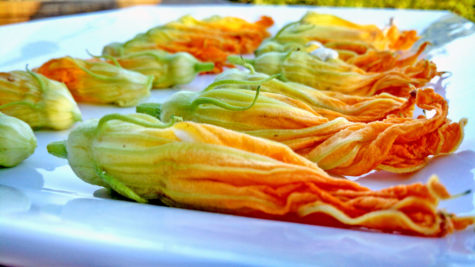
In the southwestern United States and Mexico, pumpkin and pumpkin flowers are a popular and widely available food item. They may be used to garnish dishes, and they may be dredged in a batter then fried in oil.
Pumpkin blossoms are flavorful and colorful when used as a garnish on salads. Remove the anthers inside, wash, dry the flowers, and use them whole or chopped. Stuff the blooms with rice, herbs or cheese when cooking with pumpkin flowers. You can also pickle, deep fry, or can pumpkin blossoms. If you cook the flowers, you can freeze them.
The flowers can be eaten straight off of the plant, added them into a salad, and for a nice breakfast treat, they can be dipped into pancake batter, cooked in a skillet.
Whichever method you choose, prepare the blooms as quickly as possible for best flavor and texture. Harvesting pumpkin flowers is easy and a great way to put the male blooms to use rather than having them simply fall from the plant to waste away.
Harvesting and Preparing the Leaves
Pumpkin leaves are edible. They are chock-full of iron, and may be prepared like other dark green, leafy vegetables. How do they taste? Here’s a review:
“The pumpkin greens lacked any bitterness that other greens tend to have, which surprised me. These might be the sweetest greens I have eaten. Even my son and wife enjoyed them. The flavor reminded me of a mixture of green beans, broccoli, spinach and asparagus.”
Italian pasta recipes include the leaves and stems, blanched briefly, then fried with oil and garlic before being tossed with chopped tomatoes. The Malaysian dish Pucuk Labu combines smaller, tender pumpkin leaves and shoots with anchovies, garlic and sliced onions, all simmered in rich coconut milk.
Pick the young-medium aged leaves (not the older tougher ones), and use them in cooked recipes like you would a spinach or a heavy winter green.
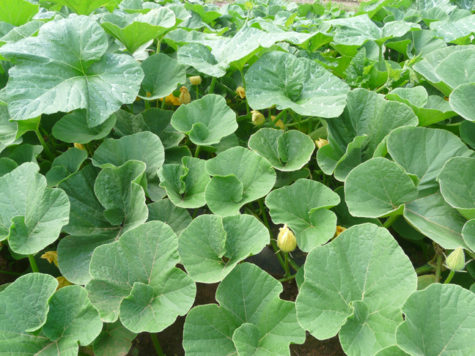
Covered in fuzz and possessing a thick, fibrous spine, pumpkin leaves aren’t all that intuitively edible. They take a little bit of advance preparation before you can use them in recipes.
Here is a simple method:
“Holding the leaf upside down by its stem, you see that the stem is hollow. Use your thumbnail to split half or a third of the stem and snap it backward so that the flesh breaks cleanly, but the outer fibers do not. Pull gently, removing the fibers from the outside of the stem and the back of the leaf. Repeat until you have de-strung a good pile, because, like all greens, pumpkin leaves cook down quite a bit.”
Once you’ve de-strung a pile of pumpkin leaves, you can cook them in a variety of ways. In Malawi, they are often simmered simply with tomatoes just for a few minutes until the leaves are tender.
Harvesting and Preparing the Seeds
Pumpkin seeds are a good source of plant protein, high mineral content, and vitamin F.
Traditional folk medicine touts pumpkin seeds as an effective treatment for prostate enlargement. Anti-inflammatory agents, known as phytosterols, combine with the healing properties of zinc to potentially reduce the size of the prostate.
Pumpkin seeds are just about the richest natural sources of zinc nutrition ever found. The use of pumpkin seeds for their beneficial effect on the prostate gland is as old as the ages. (Referred to as He-man power).
Pumpkin seeds are usually roasted and consumed as healthy, protein-packed snacks.
To harvest your pumpkin seeds, slice open your pumpkin (to eat or to make as a jack-o-lantern). Scoop out the seeds with your hands or a large, sturdy spoon. Place the seeds in a bowl. *Some pumpkin varieties have seeds with white husks over the nut meat, and some just contain the green nutmeat, aka “pepitos.”
You can process and eat pumpkin seeds the same way, regardless of the variety.
Heat a frying pan and add enough high heat vegetable oil (we like organic sunflower, grapeseed, or raw coconut oil) to sauté them. Once the pan is hot, add the pumpkin seeds. *Don’t worry if there is a little bit of pumpkin string still attached, this cooks up fine and adds some nice flavor & nutrition.
As soon as the seeds are in the pan, add some fresh ground sea salt. Stir repeatedly to ensure light, even browning uniformly on the seeds’ surfaces. Let them cool down, but eat them while they’re still warm for best flavor! They’ll also store for a long time and make a great, healthy alternative to potato chips.
Nutritional breakdown
According to the USDA National Nutrient Database, one cup of cooked, boiled, or drained pumpkin without salt contains:
- 1.76 g of protein
- 2.7 g of fiber
- 49 calories
- 0.17 g of fat
- 0 g of cholesterol
- 12.01 g of carbohydrate
This amount of pumpkin also provides:
- more than 200 % of the recommended daily allowance (RDA) of vitamin A
- 19 % of the RDA of vitamin C
- 10 % or more of the RDA of vitamin E, riboflavin, potassium, copper, and manganese
- at least 5 % of thiamin, B-6, folate, pantothenic acid, niacin, iron, magnesium, and phosphorus
In addition to the meat, one can also consume the green seeds inside their shell, which also provides a concentrated dose of nutrition, such as:
- An excellent source of vitamin K
- Rich in riboflavin, folate, thiamin, B6, and niacin
- Good source of vitamin A
- Excellent source of manganese, magnesium, phosphorus, iron, copper, zinc, and potassium
- Contains beneficial amounts of selenium
- Excellent source of healthy fats and dietary fiber
- Quality source of vegan protein (1 ounce yields 7 grams of protein)
Around The World
Pumpkin leaves are traditional vegetables of choice to many communities in Africa, North America and Asia. This is because of their ease of availability, rich in nutrients and less demanding husbandry. The leaves are normally mashed with potatoes, maize, beans and bananas to make a delicious meal.
- In Tanzania, pumpkin leaves, peanut butter, onion, chili and coconut cream are nicely blended to make a soup called ‘M’chicha Wa’nazi’.
- In Kenya, ‘Mukimo’ is a delicacy prepared by mixing well cooked maize, peeled potatoes and mashing them together with pumpkin leaves and sometimes boiled pumpkin fruit slices.
- In the Middle East, pumpkin is used for sweet dishes; a well-known sweet delicacy is called halawa yaqtin.
- In South Asian countries such as India, pumpkin is cooked with butter, sugar, and spices in a dish called kadu ka halwa.
- Pumpkin is used to make sambar in Udupi cuisine.
- In Guangxi province, China, the leaves of the pumpkin plant are consumed as a cooked vegetable or in soups.
- In Australia and New Zealand, pumpkin is often roasted in conjunction with other vegetables.
- In Japan, small pumpkins are served in savory dishes, including tempura.
- In Myanmar, pumpkins are used in both cooking and desserts (candied). The seeds are a popular sunflower seed substitute.
- In Thailand, small pumpkins are steamed with custard inside and served as a dessert.
- In Vietnam, pumpkins are commonly cooked in soups with pork or shrimp.
- In Italy, it can be used with cheeses as a savory stuffing for ravioli.
- In Nigeria, pumpkin leaves are used to make soup, cassava salad, plantain porridge and ‘Asaro or Ebe’ (yam pottage).
- Pumpkin leaves are also eaten in Zambia, where they are called chibwabwa and are boiled and cooked with groundnut paste as a side dish.
- Pumpkin leaves, usually of C. moschata varieties, are eaten as vegetable in Korean cuisine.
Borrowed from: Encyclopedia of Herbology
Pickled Nasturtium Seeds
Use green nasturtium seeds, and in picking retain a short length of stem on each. Lay the seeds in cold salted water for two days (two tablespoons salt to one quart water), then place them in cold water for another day. Drain well and place the seeds in a glass jar, cover with vinegar heated to the boiling point, and close the jar tightly. In a few days the seeds will be ready to use. They are an excellent substitute for capers.
From: Herbal Gardens
How To Make Sprouts
Use one part seed to at least three parts water. Soak in a wide-mouth jar. All measurements below yield one quart of ready sprouts. Half-gallon or larger jars are more convenient.
- 1 cup aduki beans – soak 12 hours – 3 to 5 days to sprout
- 2 tablespoons alfalfa seed – soak 6 hours – takes 5 to 6 days to sprout
- 2 tablespoons red clover seed – soak 6 hours – takes 5 to 6 days to sprout
- 1/2 cup fenugreek – soak 8 hours – 3 days to sprout
- 1 cup garbanzo beans – soak 12 hours – 3 to 5 days to sprout
- 1 cup legumes – soak 12 hours – 3 to 5 days to sprout
- 1/2 cup lentils – soak 8 hours – 3 days to sprout
- 1/2 cup mung beans – soak 8 hours – 3 to 5 days to sprout
- 1/4 cup mustard seed – soak 6 hours – takes 5 to 6 days to sprout
- 1/4 cup radish seed – soak 6 hours – takes 5 to 6 days to sprout
- 1 cup rye – soak 12 hours – 3 days to sprout
- 1 cup soy beans – soak 12 hours – 3 to 5 days to sprout
- 2 cups sunflower seeds – soak 12 hours – 2 days to sprout
- 1 cup wheat – soak 12 hours – 3 days to sprout
Instructions:
Cover the mouth of the jar with a plastic or stainless steel sprouting screen or cheesecloth, which is tied on or secured with a rubber band (sprouting jars, bags, and automatic sprouting machines are also available).
After soaking seeds for the prescribed amount of time, drain well, and keep in a warm (65 degree F) dark place. They can be covered with a cloth or bag. Sprouting time increases with more light and cooler conditions.
Rinse twice a day, ideally morning and evening. An exception is soy, which may rot if not rinsed four times daily. Keep jar tilted mouth down for better drainage. A dish drainer works well for this. Thorough rinsing and complete draining improve sprout flavor.
After three days place alfalfa, red clover, radish, and mustard sprouts in a cool place with indirect sunlight to induce chlorophyll. Continue rinsing twice daily until sprouts are ready.
Radish and mustard seed sprouts exhibit biting pungency, which adds a delightful zesty quality when mixed with other sprouts or in various dishes.
During the sprouting process, the hulls on certain seeds slough off. It is important to remove hulls from alfalfa and radish sprouts since these easily rot. Hulls from mung, aduki, and fenugreek are often removed for a lighter-tasting quality, although they can be eaten and provide fiber.
To remove the loose hulls from sprouts, place them in a large bowl of water and agitate them, further loosening and brushing them aside. Gently reach under the sprouts and lift them out of the water, without disturbing the sunken hulls, which can then be discarded.
Drain sprouts well. If refrigerated, they keep up to one week in a plastic bag or covered glass jar.
Note:
Alfalfa may not sprout in polluted tap water. Use distilled or spring water or sprout with other seeds (mung, lentil, fenugreek) in the same jar. You will have a delicious salad. Save all rinse water for cooking, watering plants, or to give your animals.
From: Healing With Whole Foods
Alfalfa Sprouts
Alfalfa is America’s favorite sprout and is considered more nutritionally concentrated than other sprouts, primarily because of its rich mineralization. The tiny alfalfa seed produces a root that can reach 100 feed into the earth, where it has access to minerals and trace elements untouched by other plants.
Alfalfa follows the doctrine of signatures: its ability to produce exceptional roots benefits our “roots,” which are often identified physiologically as our intestines and kidney/bladder functions.
Arabs were the first to discover alfalfa and found it a highly strengthening food, both for themselves and their race horses. Because of its attributes, they named it al-fal-fa, which means “father of all foods.”
From: Healing With Whole Foods
About Sprouts
Sprouts represent the point of greatest vitality in the life cycle of a plant. One clearly experiences this vitality when eating sprouts consistently. During sprouting, vitamin and enzyme content increases dramatically. At the same time starch is converted into simple sugars, protein is turned into amino acids and peptones, and crude fat is broken down into free fatty acids. Hence, the sprouting process predigests the nutrients of the seed, making it easier to assimilate and metabolize. This explains why grains and legumes, many of which are common allergens, often do not cause allergies when sprouted.
Nevertheless, the sprouting process increases the cooling attributes of the seed, which can over-cool the cold person and weaken digestion in those with low “digestive fire.” Generally if one is frail, feels cold often and/or tends toward loose stools, then sprouts must be eaten sparingly. Cooking makes sprouts more appropriate for these individuals. On the other hand, the excessive person (robust body and personality, thick tongue coating, ruddy complexion, strong radial pulse and voice) will benefit from abundant raw or lightly cooked sprouts.
In Chinese medicine, sprouts are a specific remedy for cases of stagnant liver qi (with signs such as swellings and lumps, mental depression, frustration, swollen abdomen and chest, purple-tinged or dark tongue, and/or greenish complexion).
During cold seasons, sprouts act as an excellent source of fresh vegetables. Cooking them at this time of the year balances their cooling nature. In fact, in China where sprouts have thousands of years of traditional use, they are routinely cooked. Raw sprouts have been desirable in the West because they more efficiently reduce the massive excesses occurring among the general population.
For better digestion for every type of person, large grain and legume sprouts such as aduki, lentil, corn, green peas, soy, garbanzo, and wheat can be lightly steamed and are still vital and energizing. They need to be simmered, sauteed, or steamed longer fore people who are cold or deficient.
The growth characteristics of sprouts are most appropriate for attuning one to the energetic upsurges of spring and summer.
From: Healing With Whole Foods
Pond Lily Popcorn
You can eat the seeds of yellow pond lily (Nuphar lutea) also called spatterdock, yellow water-lily, or cow lily. Here’s a recipe from Janice Schofield, an Alaskan herbalist:
Pop 1/4 cup of seeds in 2 tablespoons of oil and flavor with butter, nutritional yeast and whatever else you fancy. The Assiniboin and Micmac peoples ate them: fried in bear fat.
Enjoy!
The Health Benefits of Millet
Most people have not even heard of millet, much less understand the benefits of millet nutrition. And yet, millet is one of the best-kept secrets of our ancient ancestors. Traced back to its origin in China, millet has been used throughout the ages and across many countries.
For centuries millet has been a prized crop in China, India, Greece, Egypt and Africa, used in everything from bread to couscous, and as cereal grain. Millet is even mentioned as a treasured crop in the Bible.
This tiny “grain” is gluten-free and packed with vitamins and minerals. In fact, while it’s often called a grain because of it’s grain-like consistency, millet is actually a seed. It’s often used in birdseed mixture, but if you think it’s just for the birds, you’re missing out on important benefits of millet nutrition for yourself!
The positive effects of Millet:
- Does NOT feed pathogenic yeast (candida),
- Acts as a prebiotic to feed important microflora in your inner ecosystem
- Provides serotonin to calm and soothe your moods.
- Helps hydrate your colon to keep you regular.
- Is alkaline.
- Digests easily.
Health benefits of Millet:
- Magnesium in millet can help reduce the affects of migraines and heart attacks.
- Niacin (vitamin B3) in millet can help lower cholesterol.
- Phosphorus in millet helps with fat metabolism, body tissue repair and creating energy (phosphorus is an essential component ofadenosine triphosphate or ATP, a precursor to energy in your body)
- Millet can help lower risk of type 2 diabetes.
- Fiber from whole grains has been shown to protect against breast cancer.
- Whole grains have been shown to protect against childhood asthma.
It’s not for everyone:
While millet may not contain gluten, it does contain goitrogens. Goitrogens are those substances in food that suppress thyroid activity and can lead to goiter, an enlargement of this very important gland which resides in the throat. Low iodine intake can also lead to goiter.
While the goitrogens in foods that contain them are usually reduced by cooking (such as cruciferous vegetables), cooking actually increases the goitrogenic effect of millet! Therefore, when folks begin eating large amounts of millet bread with a wholesale switch over from wheat, the goitrogenic effects of this simple dietary change can be profound.
Protect your thyroid at all costs! It is a real challenge to unwind the effects of hypothyroidism once this vital gland is weakened or enlarged. Don’t take any chances with your thyroid health by consuming large amounts of millet bread or millet based snacks. If gluten and/or wheat is a problem, then simply reduce bread consumption or use another grain that is both non gluten containing and non goitrogenic such as rice or oats. Occasional millet bread consumption is fine if your thyroid is healthy – just don’t overdo!
Source: Body Ecology and other sources
Simple Roasted Nuts and Seeds
- almonds, 12 minutes
- pumpkin seeds, 7 minutes
- sunflower seeds 10 minutes
Procedure – Roast nuts or seeds in the oven when roasting a large quantity. Place one layer of any kind of nut or seed on a baking sheet. Place in a pre-heated, 350-degree oven. Roast for the times indicated, until fragrant, beginning to pop, and browning. Stir occasionally.
If desired, add soy sauce after roasting. Place hot roasted nuts or seeds in a bowl. Add 3 or 4 drops soy sauce per ¼ cup nuts or seeds.
Source: Ohsawa Macrobiotics
